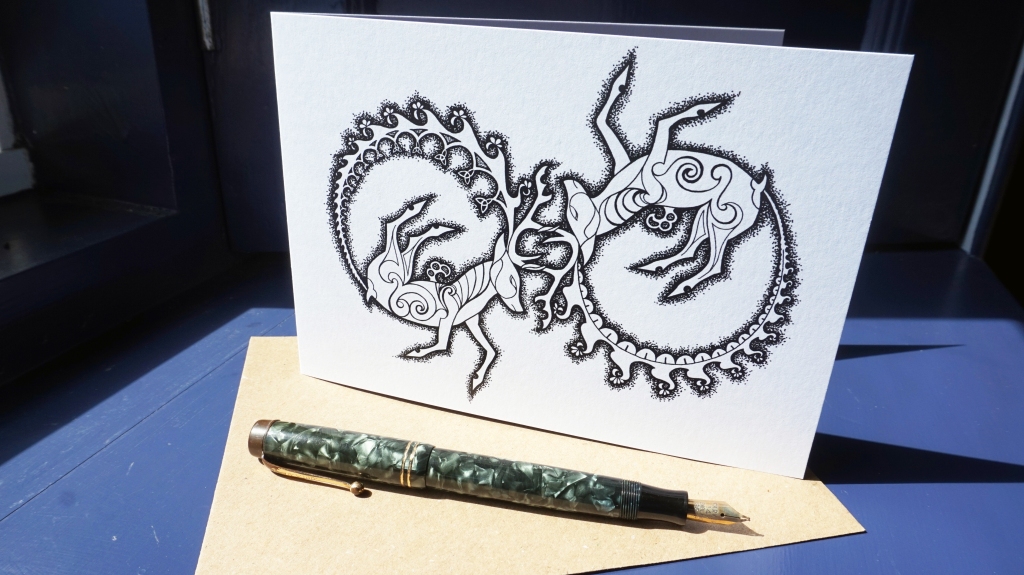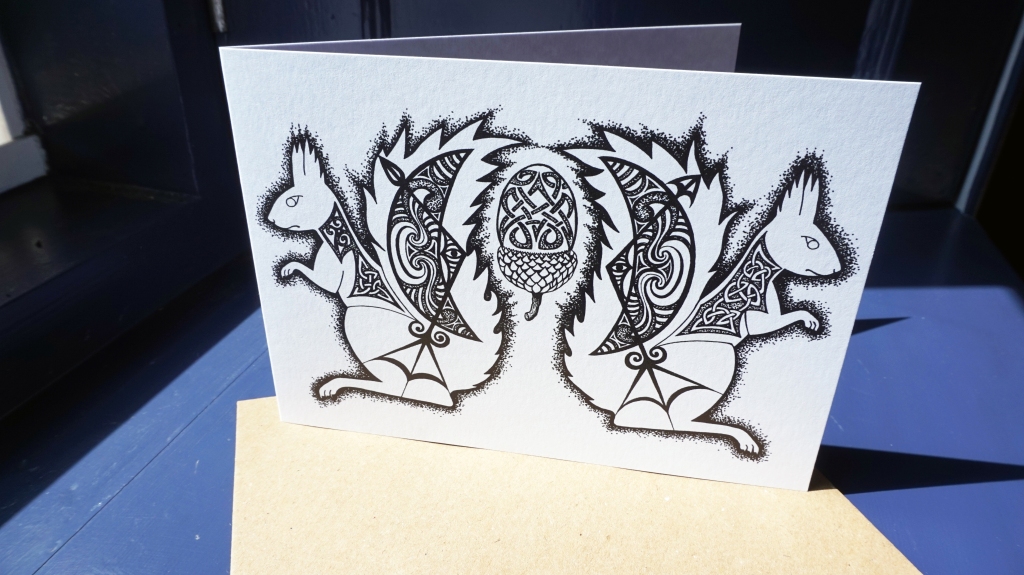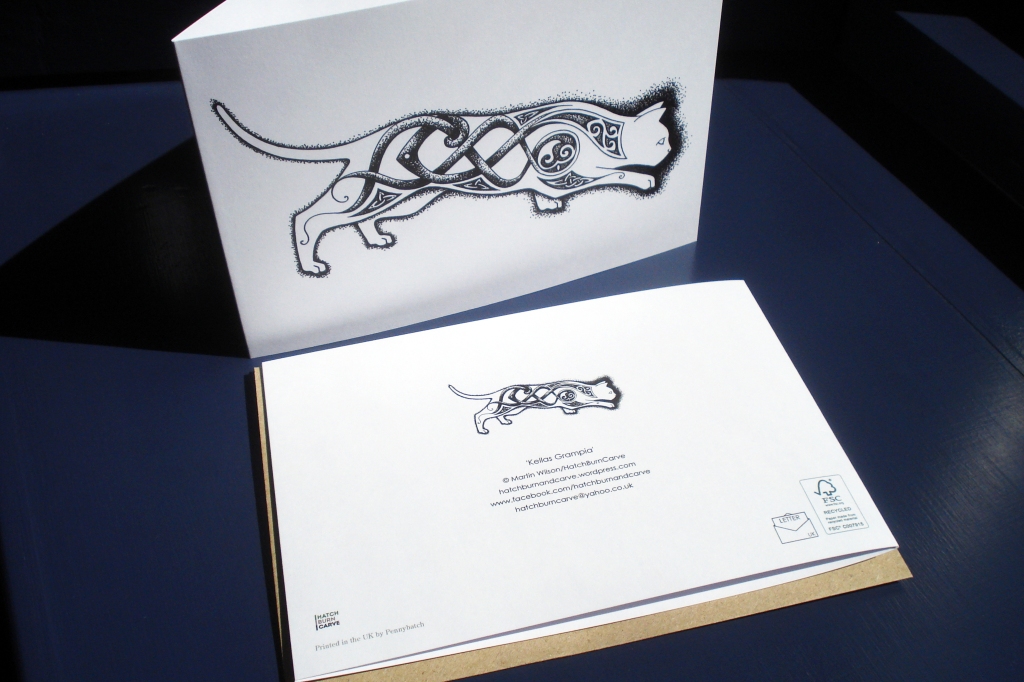ALL OF THESE DESIGNS ARE STRICTLY COPYRIGHT (2023, HATCHBURNCARVE).
Continuing my card designs from the first four that I produced last year, I took some time away from carving to create my next ones. I start my pencil sketches with an idea of the animals that I’d like to draw- some from traditional Pictish carvings (such as the boar and stag), others from my own designs I’ve previously used for slate carvings (such as the squirrel) and often using a large variety of source materials (photographs and anatomical drawings) to sketch the outlines (for example, the buzzard in the cards below).
Once I’ve finalised the outlines, I decide on the Pictish or Celtic designs that will fill the interior spaces. I often make copies of the outlines and try out a number of ideas (also involves much pencil sharpenings and erasers!). I started drawing Celtic and Pictish designs around 40 years ago, so I’m familiar with the majority of Pictish carvings, though I still refer to a few of my books if I’m looking for an idea to fill a shape (or I’m searching for a location-specific design). My two main ‘go-to’ books are ‘Celtic Art: The Methods of Construction’ by George Bain and the ‘Early Christian Monuments of Scotland’ by John Romilly Allen and Joseph Anderson.
Many of the knotwork panels in my drawings pose various problems of interlacing (such as those in the squirrels card) and it’s usually late at night when I’m really tired that the solution will suddenly pop in my head, so I have to draw it on any scrap of paper to hand (usual back of the envelope type stuff!).
The cards are available in my Etsy shop, or from the retailers listed in the post about my first four designs.

‘From Altai to Grampia’ (© 2023, HatchBurnCarve)

‘The Sky Above Meigle’ (© 2023, HatchBurnCarve)

‘The Forest Dwellers’ (© 2023, HatchBurnCarve)

‘Scrofus Dál Riata’ (© 2023, HatchBurnCarve)
One again, these cards have been expertly reproduced by Pennybatch fine art printers. They measure 178 mm x 127 mm (5″ x 7″ landscape) and are blank inside. They’re printed on 100% recycled matt card (300 gsm) with a 100% recycled Eco Kraft Brown envelope (115 gsm).
More information on each of the designs;
From Altai to Grampia (stags)
The stags are based on the Pictish carving that was found at Grantown-on-Spey (now in the National Museum of Scotland, Edinburgh), but seen through the lens of the twisted animals from the Scythian culture (such as the tattooed Scythian ice-mummies mainly found in the Altai mountains of south-east Siberia).
The Sky Above Meigle (buzzard)
A stylised Pictish/Celtic buzzard drawn as it is landing on an unseen perch. Behind the bird, a circular Celtic knot similar to those found carved on stones at both St Vigeans and Meigle.
The Forest Dwellers (squirrels)
The outline of the squirrels was adapted from one of my slate carving designs. The internal Pictish Crescent and V-Rod symbols were influenced by the carvings found on the ‘Skinnet Stone’. This cross-slab was found built into the wall of a chapel near Thurso and is now housed in the North Coast Visitor Centre.
Scrofus Dál Riata (boar)
The boar was adapted from carvings found on four Class I Pictish stones and at Dunadd fort in Kilmartin Glen. This site is believed to have been the capital of the Gaelic kingdom of Dál Riata. I have carved this boar around a hundred times and in doing so, I quickly became aware of the suggestion of an axe head in the line that extends from the trailing front leg. I expanded this idea/insight and ‘Scrofus Dál Riata’ includes a full bronze age socketed axe head within the body of the boar.
Surrounding the boar are more simplified axe heads from the carvings found at Nether Largie north cairn and Ri Cruin cairn, both in Kilmartin Glen.



